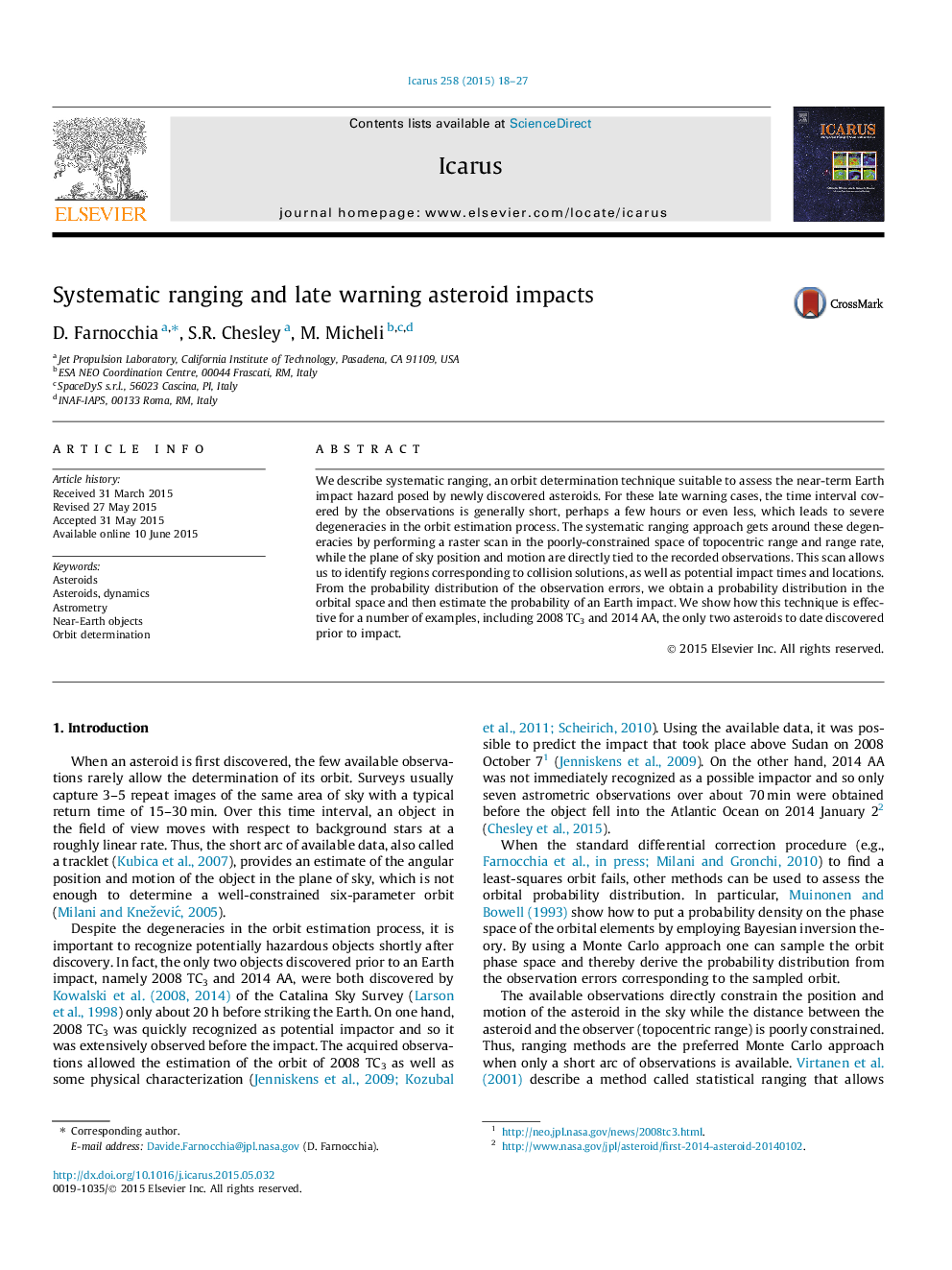| Article ID | Journal | Published Year | Pages | File Type |
|---|---|---|---|---|
| 1772996 | Icarus | 2015 | 10 Pages |
Abstract
We describe systematic ranging, an orbit determination technique suitable to assess the near-term Earth impact hazard posed by newly discovered asteroids. For these late warning cases, the time interval covered by the observations is generally short, perhaps a few hours or even less, which leads to severe degeneracies in the orbit estimation process. The systematic ranging approach gets around these degeneracies by performing a raster scan in the poorly-constrained space of topocentric range and range rate, while the plane of sky position and motion are directly tied to the recorded observations. This scan allows us to identify regions corresponding to collision solutions, as well as potential impact times and locations. From the probability distribution of the observation errors, we obtain a probability distribution in the orbital space and then estimate the probability of an Earth impact. We show how this technique is effective for a number of examples, including 2008 TC3 and 2014 AA, the only two asteroids to date discovered prior to impact.
Related Topics
Physical Sciences and Engineering
Earth and Planetary Sciences
Space and Planetary Science
Authors
D. Farnocchia, S.R. Chesley, M. Micheli,
